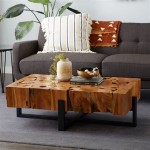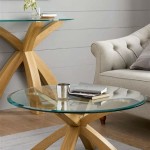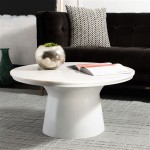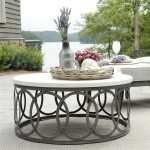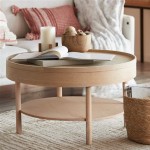Japanese Coffee Table: A Touch of Serenity and Style
In the world of interior design, the Japanese coffee table stands out as a symbol of elegance, simplicity, and timeless beauty. Rooted in traditional Japanese aesthetics, these tables embody the principles of minimalism, functionality, and a deep appreciation for natural materials. Discover the essence of Japanese coffee tables and how they can bring a touch of Zen-like tranquility to your living space.
1. Characteristics of Japanese Coffee Tables:
- Low Height: Japanese coffee tables are typically low to the ground, ranging from 12 to 18 inches in height. This design encourages a sense of intimacy and promotes a relaxed, comfortable seating posture.
- Simple, Clean Lines: Japanese coffee tables are crafted with clean lines and minimal ornamentation. The focus is on showcasing the natural beauty of the materials and the inherent elegance of the design.
- Emphasis on Natural Materials: Wood is the primary material used in Japanese coffee tables, with popular choices including teak, oak, maple, and cherry. The natural grain patterns and warm tones of wood create a sense of warmth and connection to nature.
- Tatami-Inspired Design: Some Japanese coffee tables incorporate tatami mats, traditional Japanese flooring made from woven rush grass. Tatami mats add a touch of texture and authenticity to the design.
2. Functionality and Versatility:
- Multiple Purposes: Japanese coffee tables are not just for serving coffee. They can also be used as a place to display decorative items, books, or magazines, or as a low table for dining or working.
- Adaptable to Various Decor Styles: Japanese coffee tables are versatile pieces that complement a wide range of decor styles, from traditional Japanese to modern and contemporary. Their simple design makes them easy to integrate into any living space.
3. Incorporating a Japanese Coffee Table into Your Home:
- Choose the Right Size: Consider the size of your living space and the intended use of the table. A larger table can accommodate more items and serve as a centerpiece, while a smaller table may be better suited for a cozy corner or intimate seating area.
- Think About Height: Make sure the height of the table is appropriate for your seating arrangement. It should be low enough to encourage a relaxed posture but not so low that it's uncomfortable to reach.
- Match the Style: Select a table that complements the overall style of your living room. If you have a traditional Japanese-inspired space, opt for a table with tatami mats or a simple wood design. For a more modern look, choose a sleek, minimalist table with clean lines.
A Japanese coffee table is more than just a piece of furniture; it's a reflection of a lifestyle that values simplicity, harmony, and connection to nature. As you sip your tea or coffee at this low, inviting table, let the serene beauty of Japanese design wash over you, creating a peaceful and contemplative atmosphere in your home.

Barringer Coffee Table 3d Model Conde House Japan

Low Square Coffee Table Dining Desk Japanese Floor

Cobrina Coffee Table Ookkuu

Japanese Furniture Reclaimed Wood Low Coffee Table

Japanese Style Coffee Table Small Large Solid Wood Apollobox

Pin On Furniture And Art

20th Century Japanese Coffee Table Peppermill Interiors

Japanese Wooden Coffee Table
Japanese Slab Coffee Table Oregon Black Walnut By Sjk Design Studios Wescover Tables

Tucker Robbins Japanese Coffee Table

